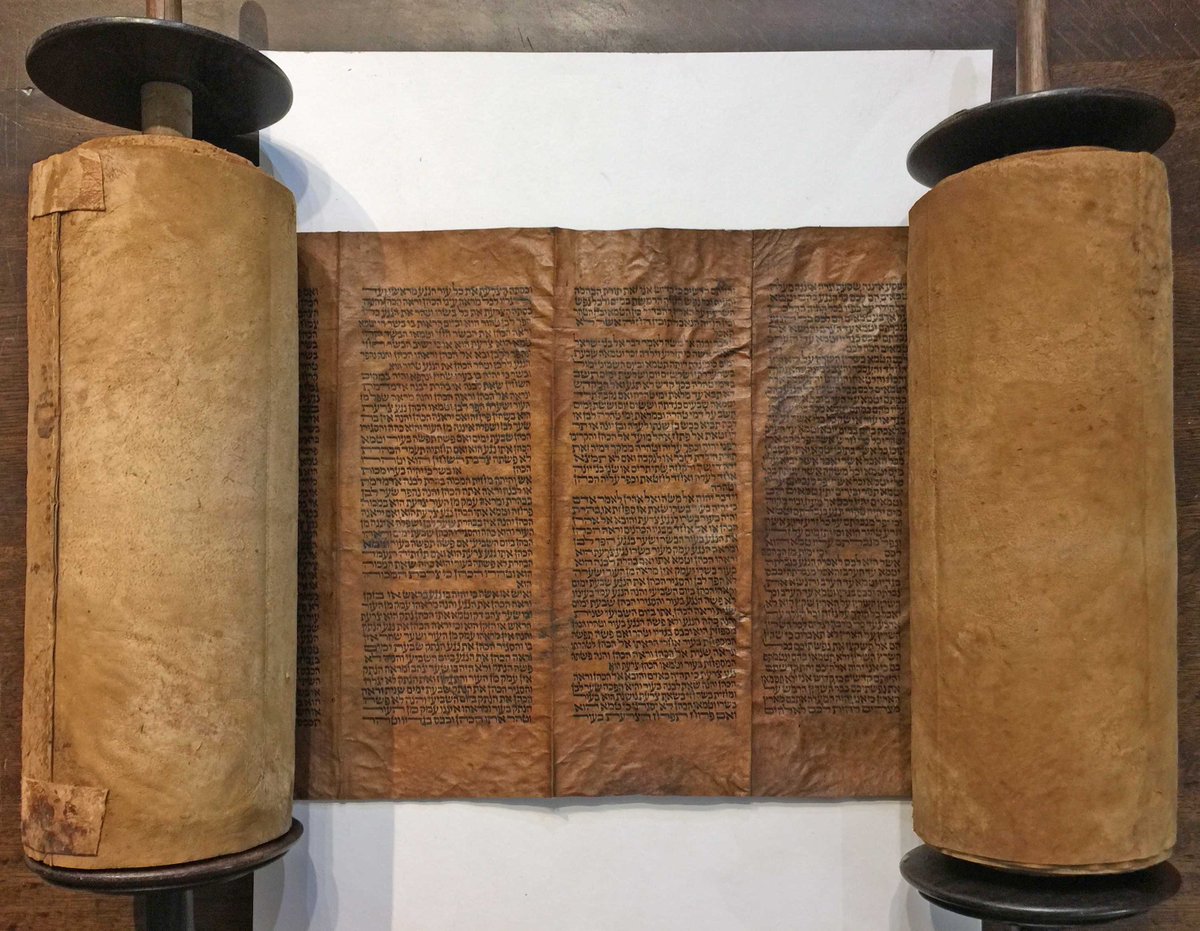A long overdue article on a major under-reported scandal: the wildly inflated appraised values given to 18th & 19th century torah scrolls bought by the MOTB and other evangelical buyers. 99% of these are historically worthless & worth less the $500 each. https://www.typeinvestigations.org/investigation/2020/04/13/how-much-is-an-unkosher-torah-worth/">https://www.typeinvestigations.org/investiga...
I& #39;m a collector in this field, and I& #39;ve visited many sofer torah (torah scribes) who have dozens, sometimes hundreds of these gathering dust in their store rooms. In quantity, they are as unsaleable as 19th century printed family bibles are in the book world.
HT @papyrologyatman
HT @papyrologyatman
Speaking generally, most manuscripts contain unique or potentially interesting details, worthy of study. Torah scrolls are the exception: they& #39;re written to conform with the most exacting & narrowly defined halachic criteria - as a result, there& #39;s almost no individual variation.
So 99% of all 18th-18th century Ashkenazi scrolls are for all practical purposes identical, as are 99% of Sephardic or North African scrolls from the same era. Scrolls from the 17th century, and especially those from the 15th century or earlier, are in a different category... 1/2
...and may indeed exhibit important differences and be very valuable. But overwhelmingly what evangelical buyers have bought are 18th, 19th and early 20th century scrolls, which dealers in the field have always regarded as essentially unsaleable. 2/2
The reference to kosher vs non-kosher scrolls in the article may be confusing: the minutest flaw - a marginal tear in the parchment, the flaking away of a single letter of one word - will render a scroll unkosher and ritually unusable. 1/2
All torahs not maintained become unkosher. They& #39;re not & #39;damaged& #39; in the sense we understand this in the book world. And kosher scrolls fetch only slightly more - a surcharge just sufficient to cover the labour of the scribe who restored the missing letter(s) or marginal tear. 2/2
Part of the problem with this is that old Torahs - North African ones in particular - LOOK very old and valuable, like something Indiana Jones might find. The scroll below is North African, probably Morocco, late 17th century - it& #39;s old, it& #39;s gorgeous, and it& #39;s worth very little.
There& #39;s a useful simplified English-language summary of the laws around the creation and use of torah scrolls, accessible to the layman, here:
http://www.keddem.org/PublicDocs/YKWorkshops_5770/Basic%20Laws%20Regarding%20Torah%20Scrolls.pdf">https://www.keddem.org/PublicDoc...
http://www.keddem.org/PublicDocs/YKWorkshops_5770/Basic%20Laws%20Regarding%20Torah%20Scrolls.pdf">https://www.keddem.org/PublicDoc...
Unwanted torah scrolls are common: The near destruction of Eastern European Jewry in the Shoah, and the defacto expulsion of nearly a million Jews from North Africa & the wider Middle East, resulted in thousands of abandoned synagogues, and tens of thousands of abandoned scrolls.
Even today, most active synagogues have more scrolls than they need or want. To commission one and donate it to your shul is both a mitzvah (good deed) and personally prestigious. So synagogues always have congregants asking to donate, requests which are often politely declined.
A further curiosity of the market for torah scrolls, is that although they are arguably the quintessential Jewish "book", most serious Jewish bibliophiles and Hebraica collectors don& #39;t in fact buy them or collect them... 1/2
If you& #39;re Jewish, there& #39;s an uncomfortable feeling seeing torahs displayed in a secular context - one instinctively feels they belong in the & #39;ark& #39; of the synagogue. I& #39;ve visited the homes of many Judaica collectors, and not one has had a personal collection of torah scrolls. 2/2
To commission a new torah scroll is expensive - it will take a scribe 8 - 12 months to complete, and cost upwards of $20 000. Devout Jews may do this because it& #39;s one of the 613 mitzvot (commandments), but this cost is *completely* unrelated to the price of existing old scrolls.

 Read on Twitter
Read on Twitter



